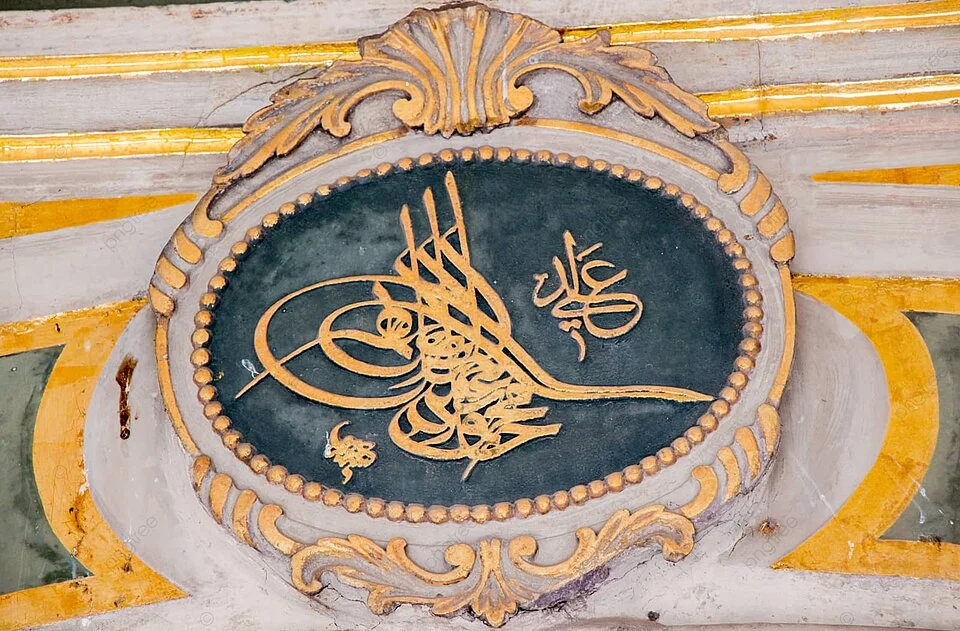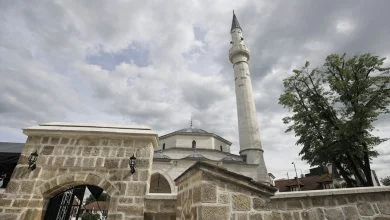
The Sultan’s Tughra: Emblem of Sovereignty and Heritage
From the inception of the Ottoman Empire in 1299, until its dissolution in 1922, the sultans from the House of Osman ruled the Ottoman dynasty in direct succession. The second ruler Sultan Orhan I (1288-1360) was the first to have a tughra designed as a calligraphic monogram or signature that would be affixed to all official documents. Later sultans also had their tughra stamped on coins minted during their reign.


As each sultan ascended the throne, he had a carefully crafted tughra that embellished his name drawn by the court calligrapher. Gradually, the design of tughra evolved over time until it reached a pinnacle during the reign of Suleiman the Magnificent (1494-1566).

Composition of the Tughra
As sultans worked on the design of their tughra, they considered these five major elements:
- Tuğ – The three tugs represent independence.
- Zülfe – S shaped winds that blow east to west as the movement of the Ottomans.
- Hançer – This part represents a sword, sign of power and might.
- Sere – The sultan’s name is written in Ottoman script in this section.
- Beyze – Egg shapes to the left of the tug with the outer larger loop perhaps signifying the Mediterranean and the inner, smaller loop the Black Sea that the sultan governed.
After officially commissioning the tughra, they would affix it to royal decrees, emblazon it on coins, or emboss it on a very special collection of books inscribed as a gift donation to the Library of Congress.
Firmans
The Library of Congress holds several royal decrees called “firmans” in the Ottoman collections in the African and Middle Eastern Division.
One of the most exquisitely illuminated firmans is the royal decree of Mustafa III (1717 – 74). The tughra of Sultan Mustafa III appears at the base of the conical arrangement of tulips and other flowers. The script of the royal decree at the bottom of the firman is the Ottoman Divanee, a cursive style of Arabic calligraphy used in the Imperial Chancery.


Unraveling the Mystery of Grandmother’s Coins
(The requester has kindly agreed to let me share the following information.)
In one of the most intriguing reference inquiries I have received, the requester asked if I could translate the text on the Ottoman coins given to his grandmother in her dowry. The family kept the coins, and after her passing, they distributed them among the family members.
Where to start? At first glance, the front design appeared to be a sultan’s tughra, which is an official monogram or signature stamped on coins minted during his reign. Additionally, the back design featured the sultan’s name written out.
The first step was to transcribe and Romanize the letters on the back of the coin from Ottoman Turkish and they spelled M E H M E D V (1844–1918).
The next step was to check the tughra on the front of the coin with the tughra found in “Resimli-.haritalı mufassal Osmanlı tarihi (Detailed Ottoman History with Illustrations),” by Sever Iskit and they matched.



With this analysis and match, a follow up question was posed. Would your grandmother have had access to gold coins for her dowry with the sultan who was reigning at the time? Mehmet V reigned from April 27, 1909 to July 3, 1918. “Would these dates fit with your grandmother?” The answer revealed that she got engaged in 1911. Her dowry may have included the coins, which were likely recently minted at the time.




